Echizen Sashimono, a collection of traditional Echizen crafts
"Echizen sashimono" is represented by chests of drawers and fittings.
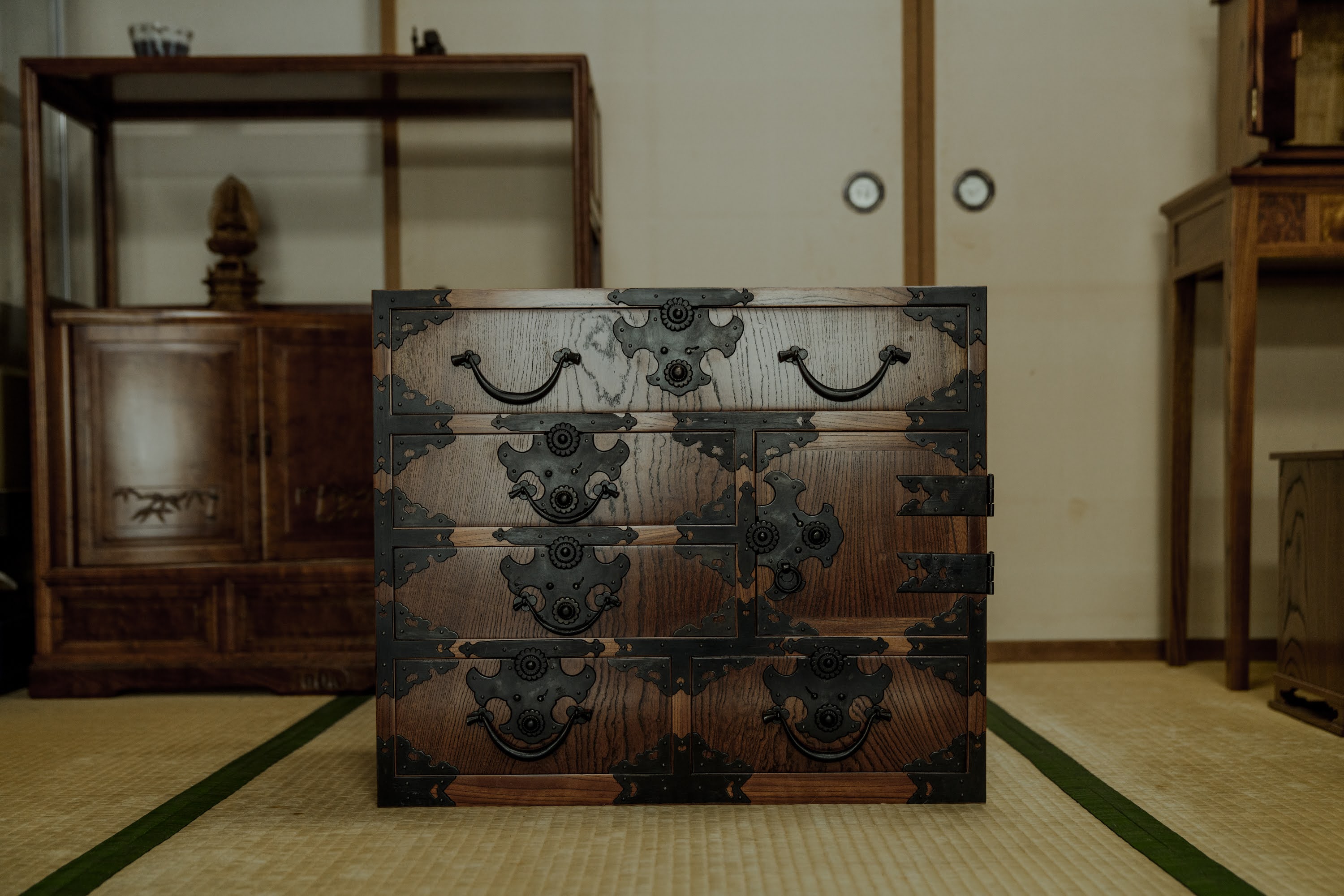
Sashimono is a product such as chests, furniture, furnishings, and fittings made by a technique that uses wooden boards and metal rods, without the use of nails, to point them together. Sashimono cannot be made with a single technique alone but requires the integration of various techniques such as woodworking, lacquer, and metalworking.
Echizen Sashimono-finishing is said to have begun in the late Edo period, but this Sashimono-finishing technique was perfected because multiple traditional techniques unique to Echizen, such as hammered blades and lacquerware, had developed prior to that time. The fact that Fuchu was the center of the Echizen Province as the national capital also catalyzed the concentration of these craftsmen, and the quality of Echizen Sashimono works has been pushed to an extremely high level due to the overlapping of several layers of crafts.
Fuchu, a town of artisans
The area around HAPI-LINE FUKUI in Echizen City is still the center of the city where city hall and other administrative facilities are located. In the reign of King Keitai 1,500 years ago, the town was already the gateway to "Koshinokuni" a large country stretching from Fukui to Niigata, where people and goods came and went.
In the Nara period (710-794), it became increasingly important as a frontline base for the conquest of the Emishi, and the "national government" of Echizen Province was established, making it the center of Echizen in both name and reality. It is known that Murasaki Shikibu, the author of "The Tale of Genji" lived in Echizen Province during the Heian period (794-1185), accompanying her father, Fujiwara no Tametoki, on his assignment as a provincial governor.
During the Nanbokucho, Muromachi, and Sengoku periods, Echizen Province was at the mercy of wars, but it was also a center of all kinds of craft techniques and was therefore protected by the powers of the time. Fuchu Castle was built on the site of the national capital, and many feudal lords, including the Fuchu San-ninshu of Mitsuharu Fuwa, Narimasa Sasa, and Toshiie Maeda, came in and out of the castle to protect the lives of the craftspeople.
Furthermore, during the Edo period (1603-1867), Honda Tomimasa, a retainer of the Matsudaira family of the Fukui domain, encouraged the industry, which is said to have attracted more and more craftsmen to the area. In particular, the establishment of shares for silk makers, weavers, blacksmiths, and liquor dealers led to an increase in the number of artisans going to the successful Edo Period businessmen as production and distribution stabilized.
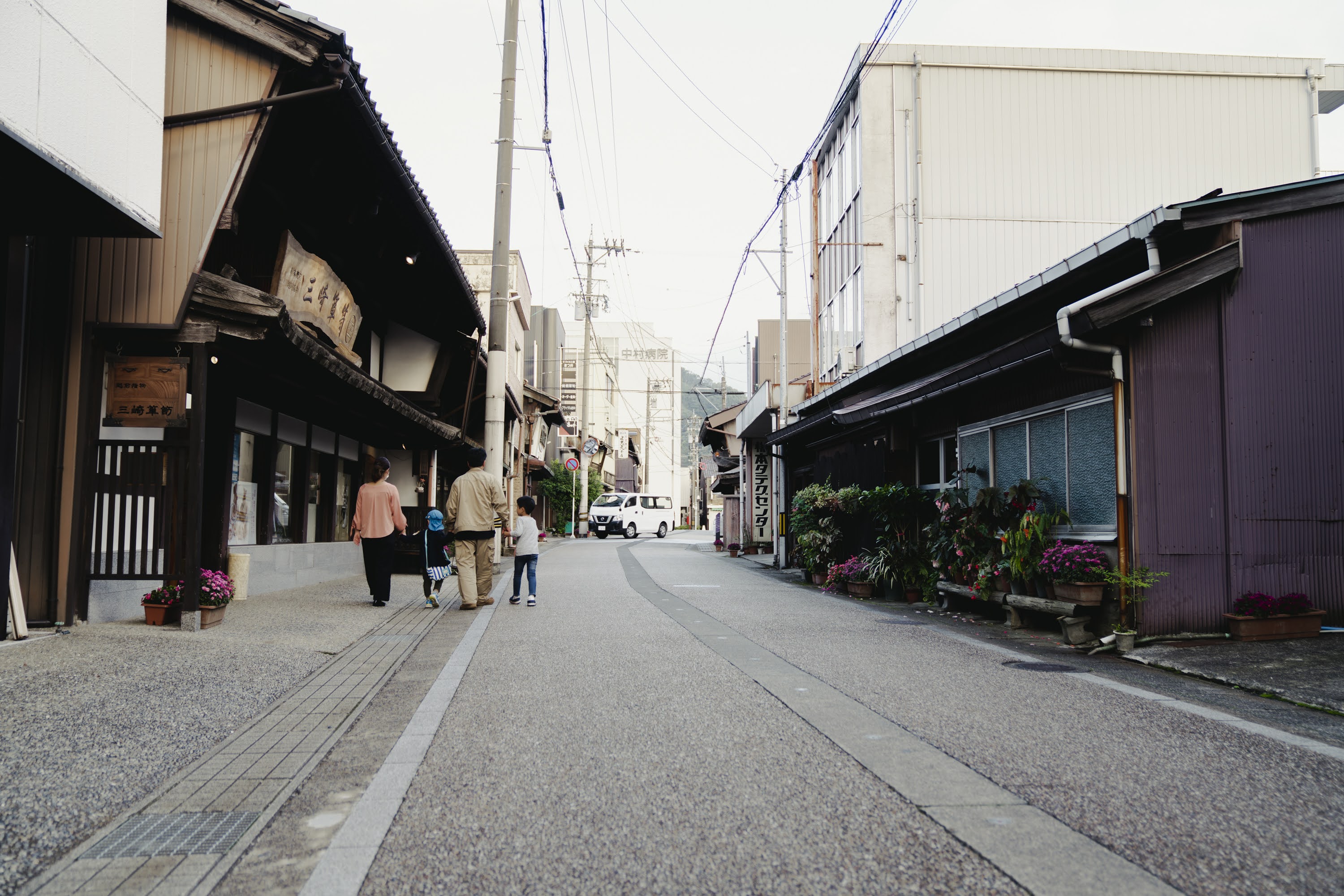
We put the Japanese spirit of "wa" into our hospitality.
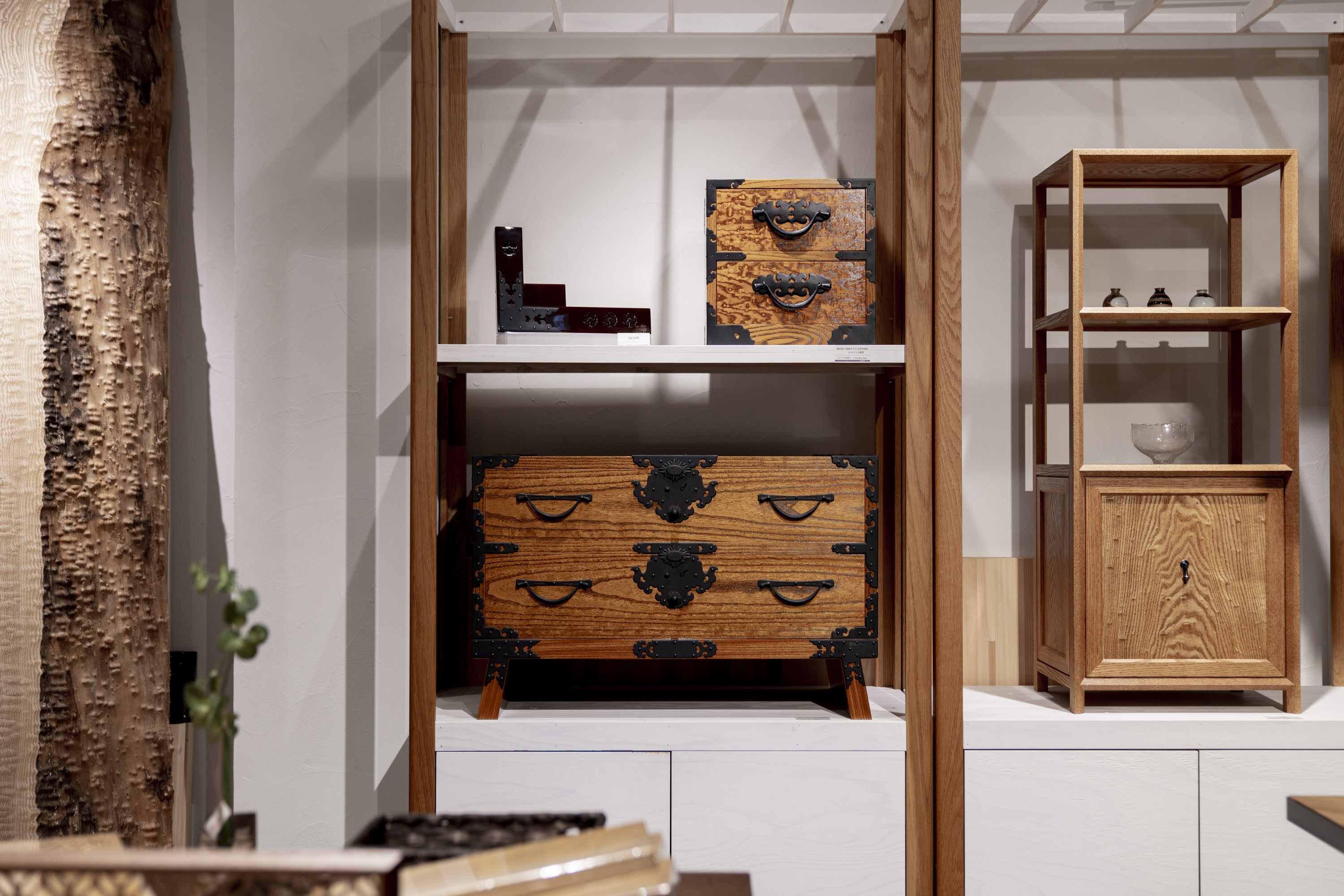
Echizen tansu, a type of Echizen Sashimono-finishing, is a Japanese chest of drawers made of wood processed using techniques that do not use nails, such as "hozotsugi" and "ari-gumi," and lacquered all over with gorgeous decorative metal fittings, giving it a stately appearance.
Echizen tansu chests are made using reliable traditional techniques handed down over 700 to 1,500 years, including Echizen hammered blades for iron fittings such as pulls, and Echizen lacquerware for lacquering, and in the Meiji period (1868-1912) they were highly regarded nationwide along with Mikuni tansu chests.
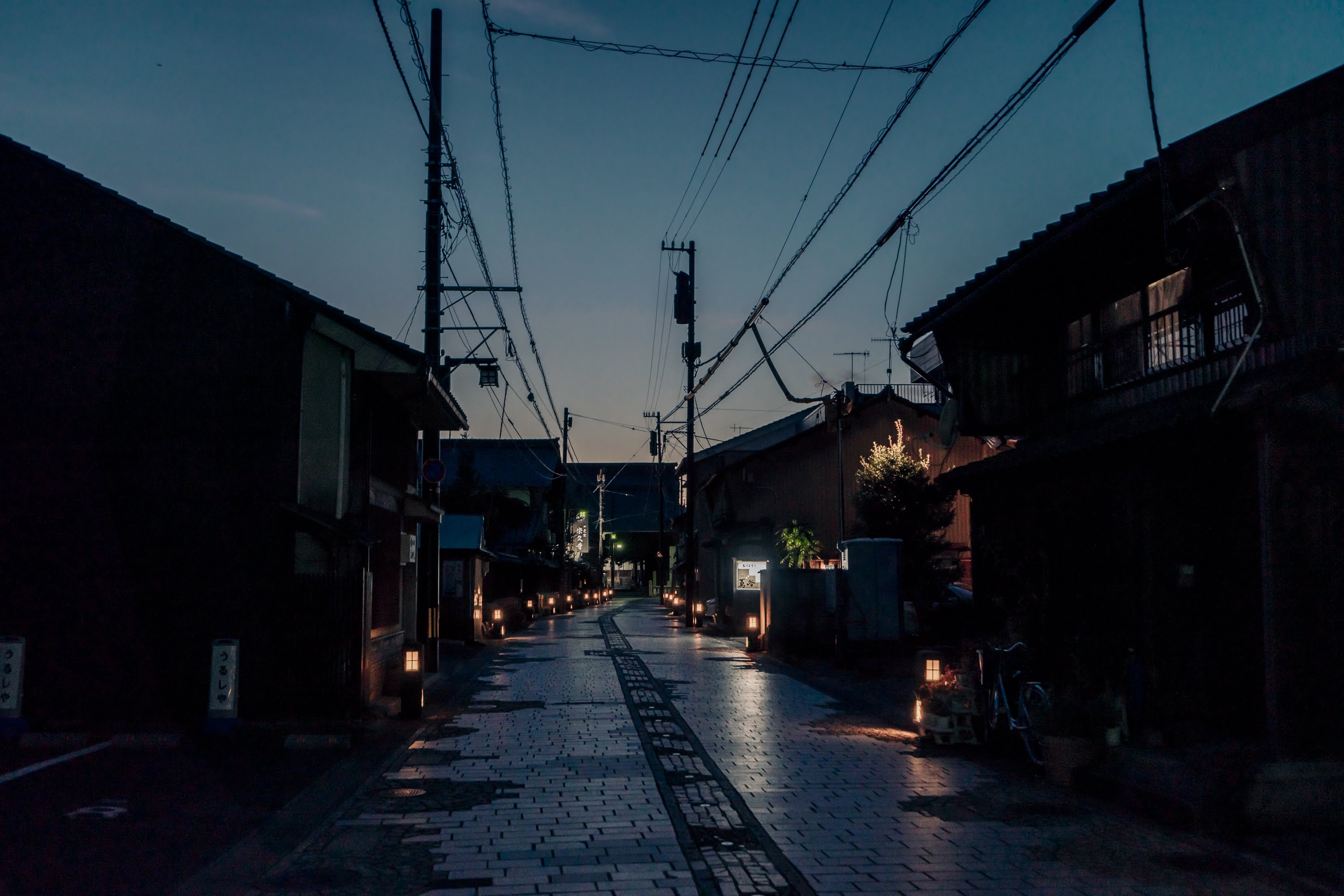
In addition to the book chests used at ryotei (Japanese-style restaurants) to store books, more and more people sought Echizen tansu as wedding gifts, and around the middle of the Meiji period (1868-1912), a "tansu-machi street" emerged, lined with the workshops and stores of tansu craftsmen. As artisan friends were made, the culture of dining and banquets also flourished in the town of Fuchu, and this area still has a particularly large number of ryotei (Japanese-style restaurants) and banquet halls.
Mr. Onodani, the fifth-generation heir to the Kamani Besso ryotei (Japanese-style restaurant), which was established in 1873, says he wants to go back to the roots of ryotei culture.
"Our store, which has been around since the Meiji era, has been able to continue to operate while changing its form in accordance with the times. However, I think now is the time to go back to the original form of ryotei. Ryotei is a comprehensive facility where you can taste all aspects of Japanese culture. There are dishes, kimonos, ikebana, vessels, hangings, and of course, chests and fittings made of Echizen Sashimono works. It is only here in Echizen that we can have everything like this."
While retaining the Kamani Villa in town, Mr. Onodani established Chakaiseki Kashu, which offers hospitality to one guest per pavilion along the former Bashaku Road, in order to make it a center of ryotei culture.
The beauty of Japanese culture is that it is not something that is forced upon you, but rather a culture of 'perception'. How much are they putting their feelings into their actions for you? Through ryotei, we would like to pass on the culture of kindness, which has been known since the time of Prince Shotoku as 'Wa womotte totoshi to nasu' (respect with harmony)."
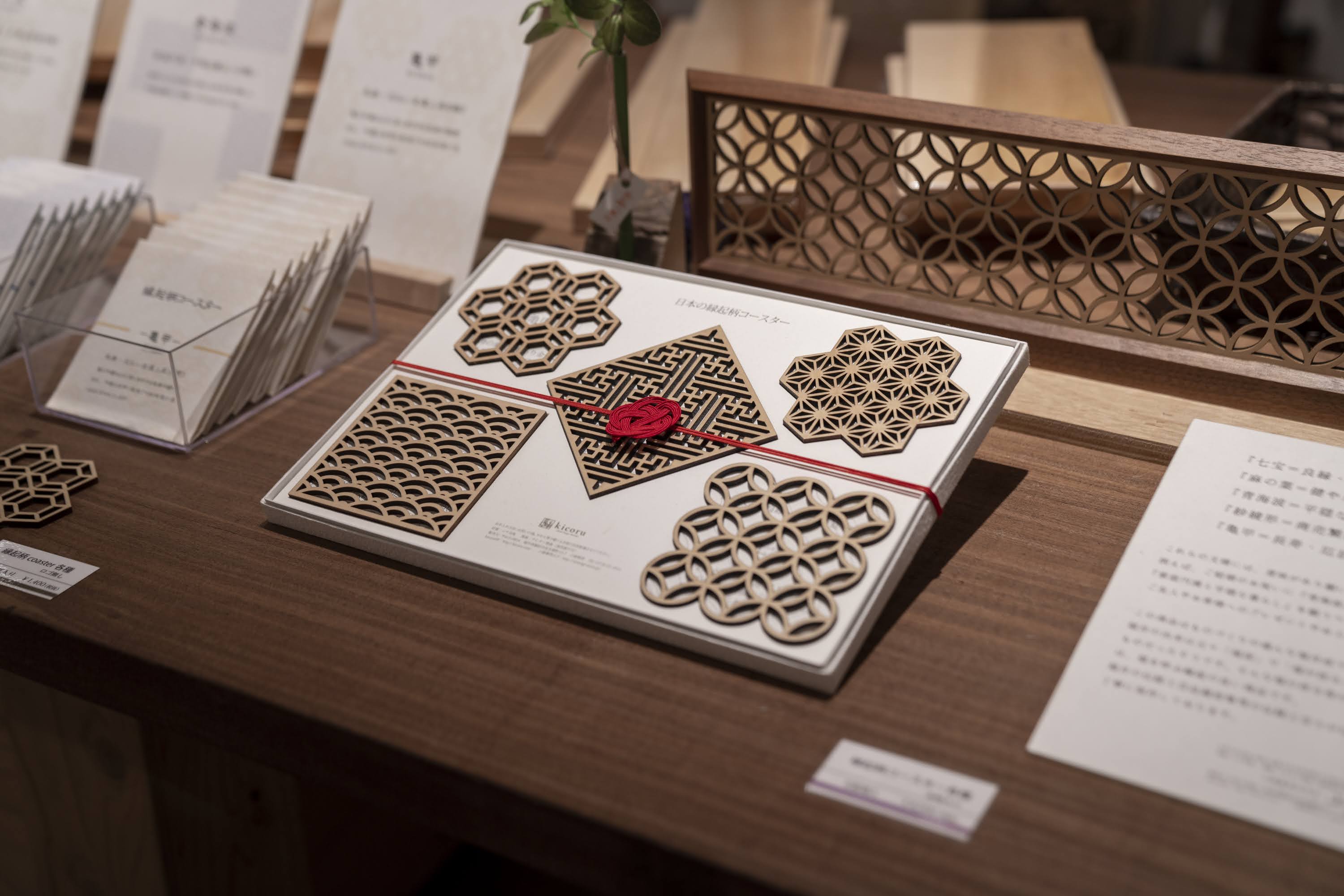
What has made this town exist over the past 1,500 years is the high skills passed down by each and every craftsman, and the gentle disposition of the people who always think of others and their surroundings. Perhaps the accumulation of beautiful mindfulness in harmony with time and the environment has created Echizen's multilayered and profound charm. We hope you will feel the fine spirit of the people of this town through Echizen Sashimono works, which are made of many parts intricately assembled and perfectly aligned.
Text / Mikiyo Sato




